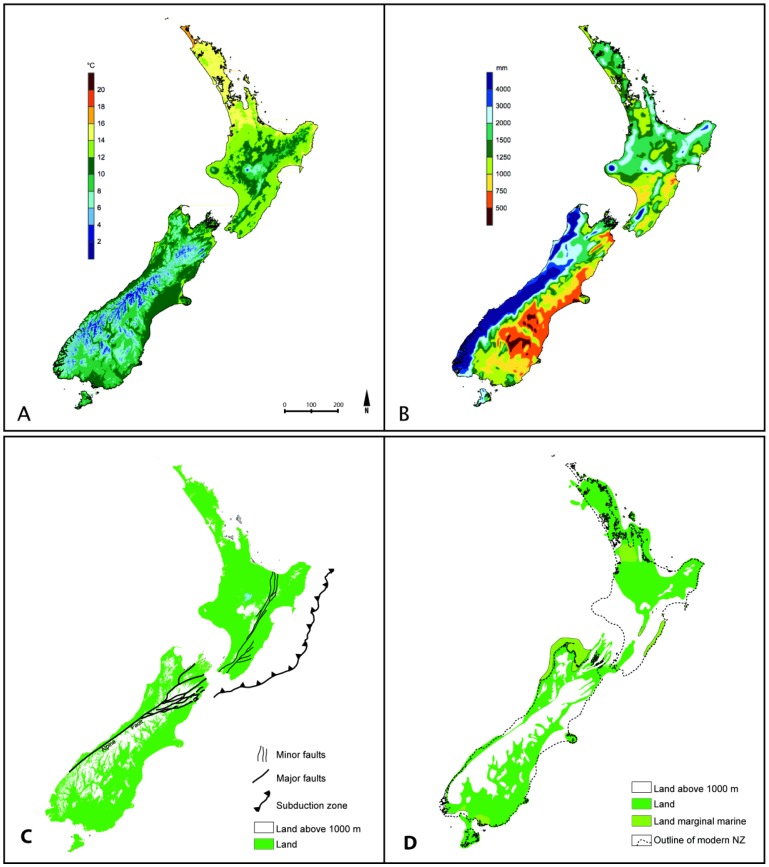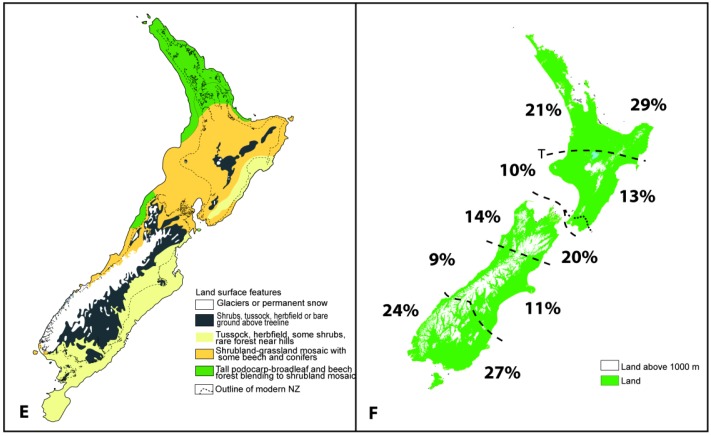Figure 2.
Geophysical and biogeographic features of New Zealand past and present. Environmental heterogeneity: A, mean annual temperature, B, mean annual rainfall, C, elevation. Temporal changes: D, Pliocene palaeogeography at 3 Ma, E, Pleistocene LGM, may yield uneven distribution of biodiversity (F). F, regional insect endemicity in a sample of 1724 species, % of species in a region that are endemic to that region (left), % of all 596 regional endemics that are endemic to a particular region (right). Thus phylogeographic (population) structure is a product of current and past environmental structure. Climate maps (A, B), courtesy of NIWA [91]. Palaeogeographic reconstructions (D, E) based on [92] and [93] respectively. Regional insect endemicity (F) from analysis of data in Fauna of New Zealand series volumes (2,3,12,15, 16,20–21,23,25,27,30,3–36,39–50,53,54,57–59,62,63,65) containing suitable information.


